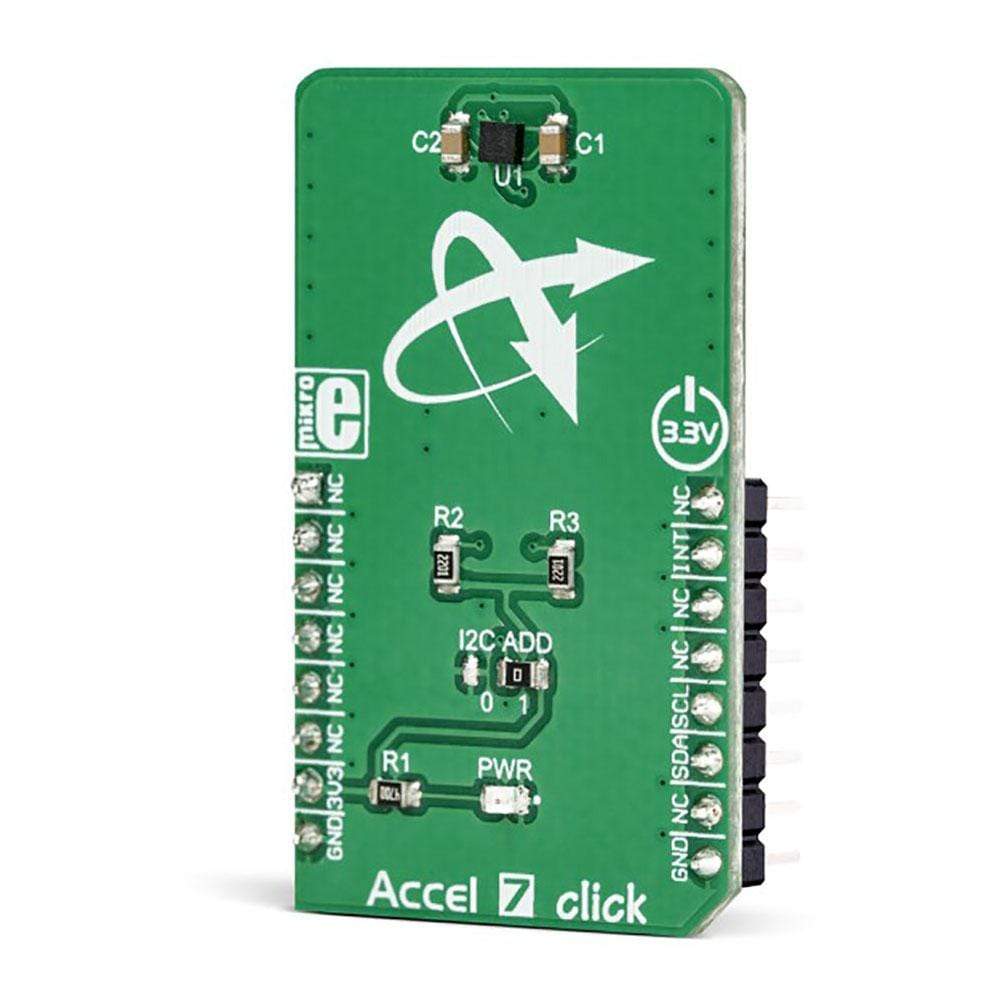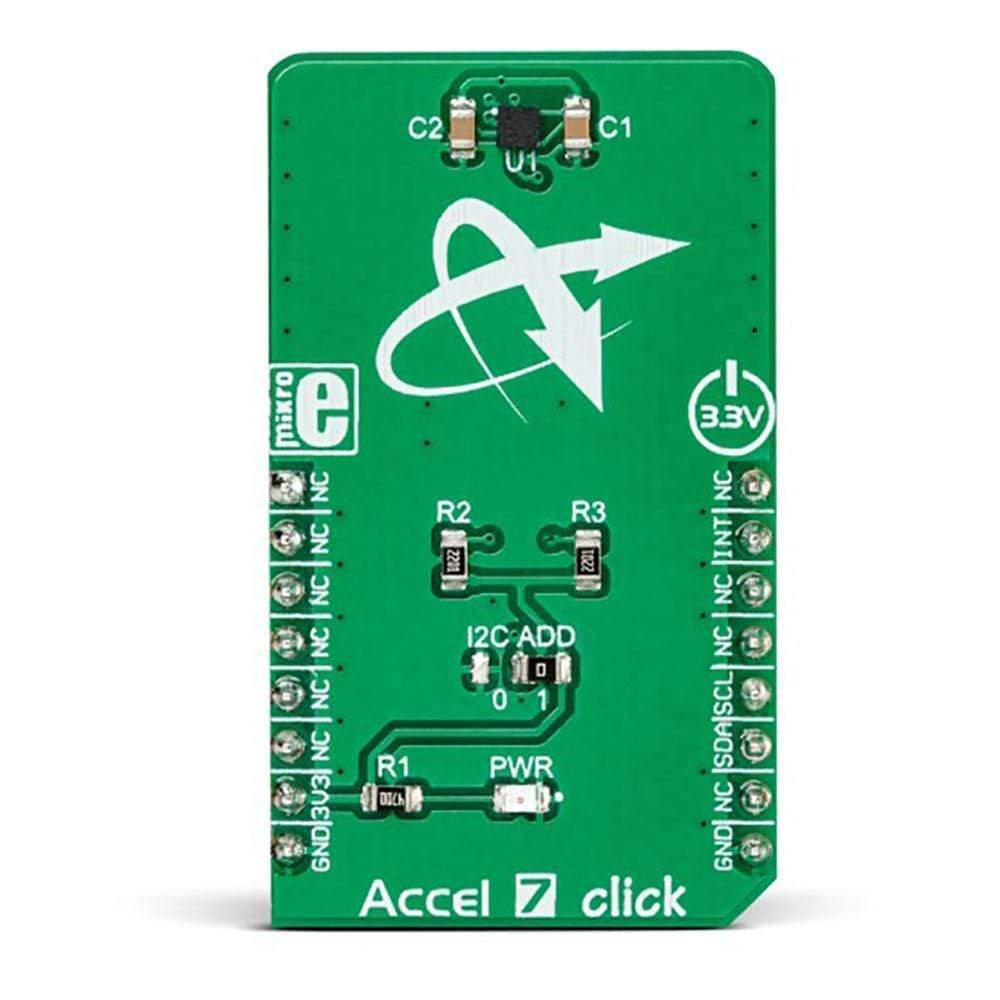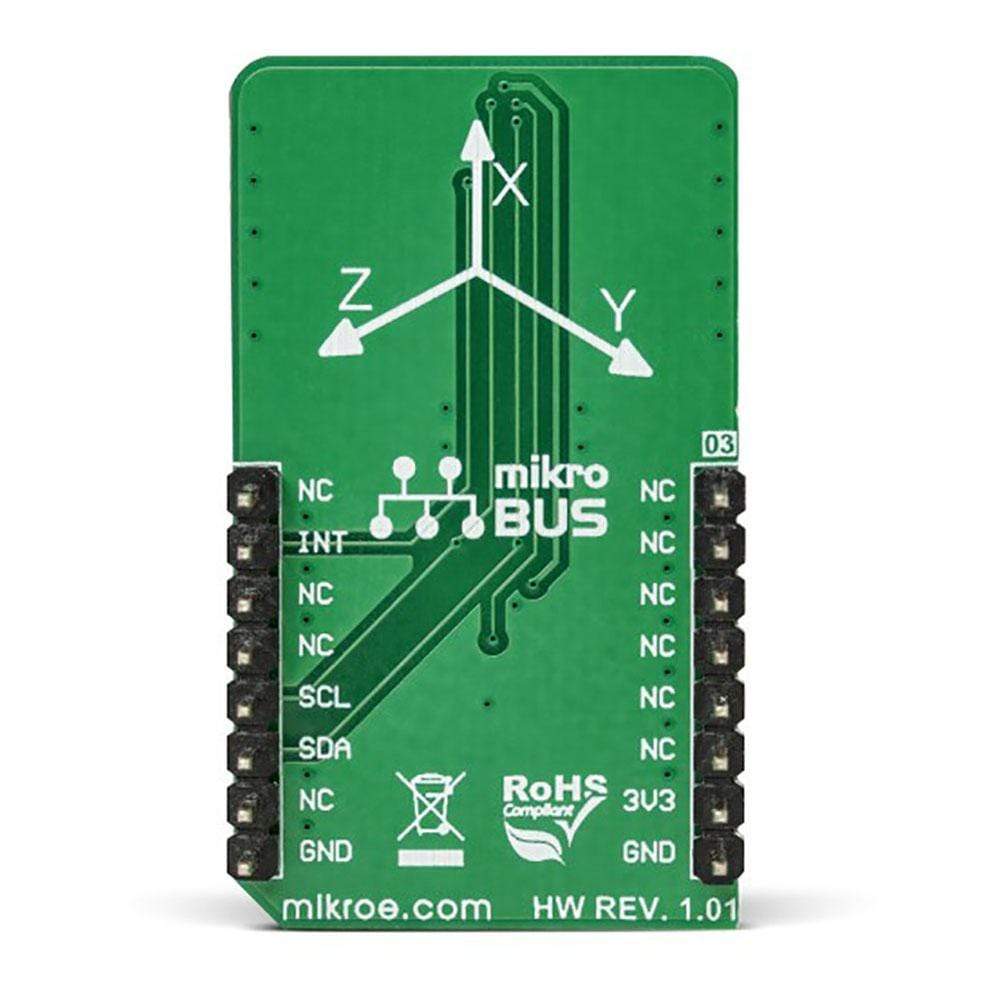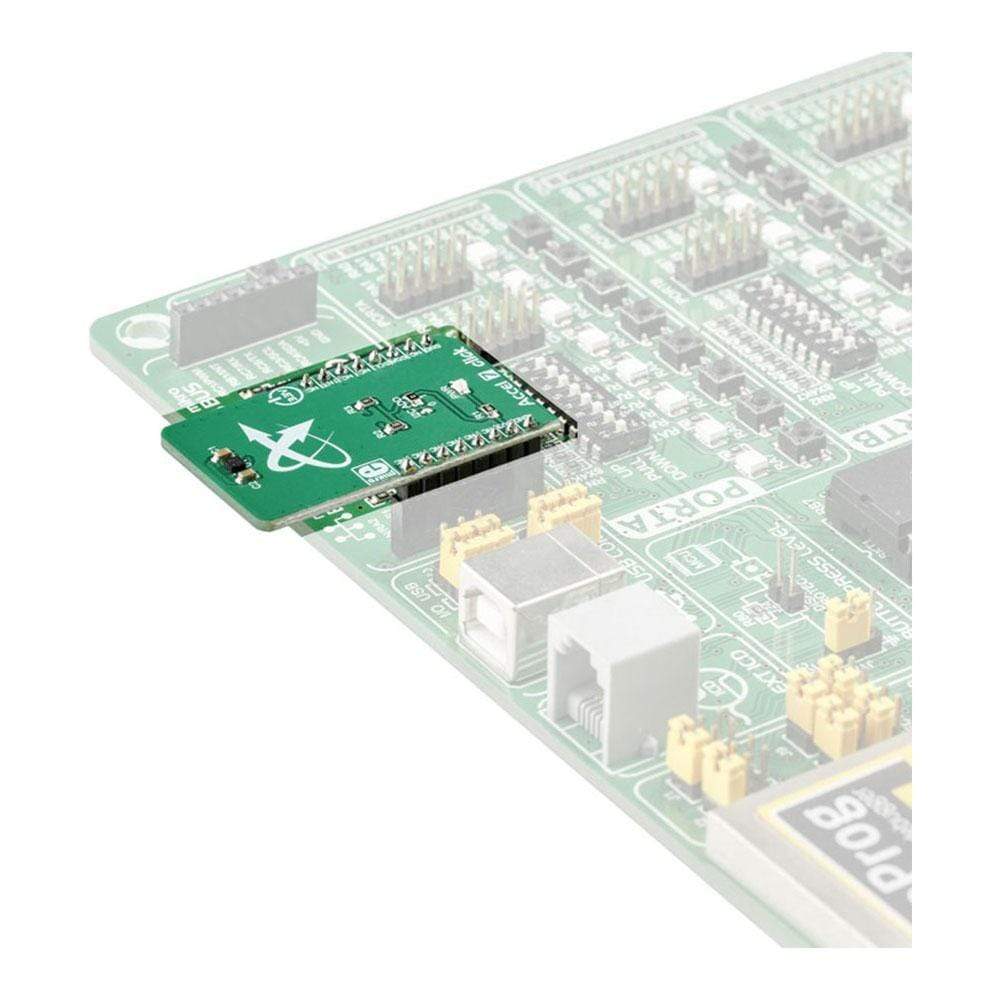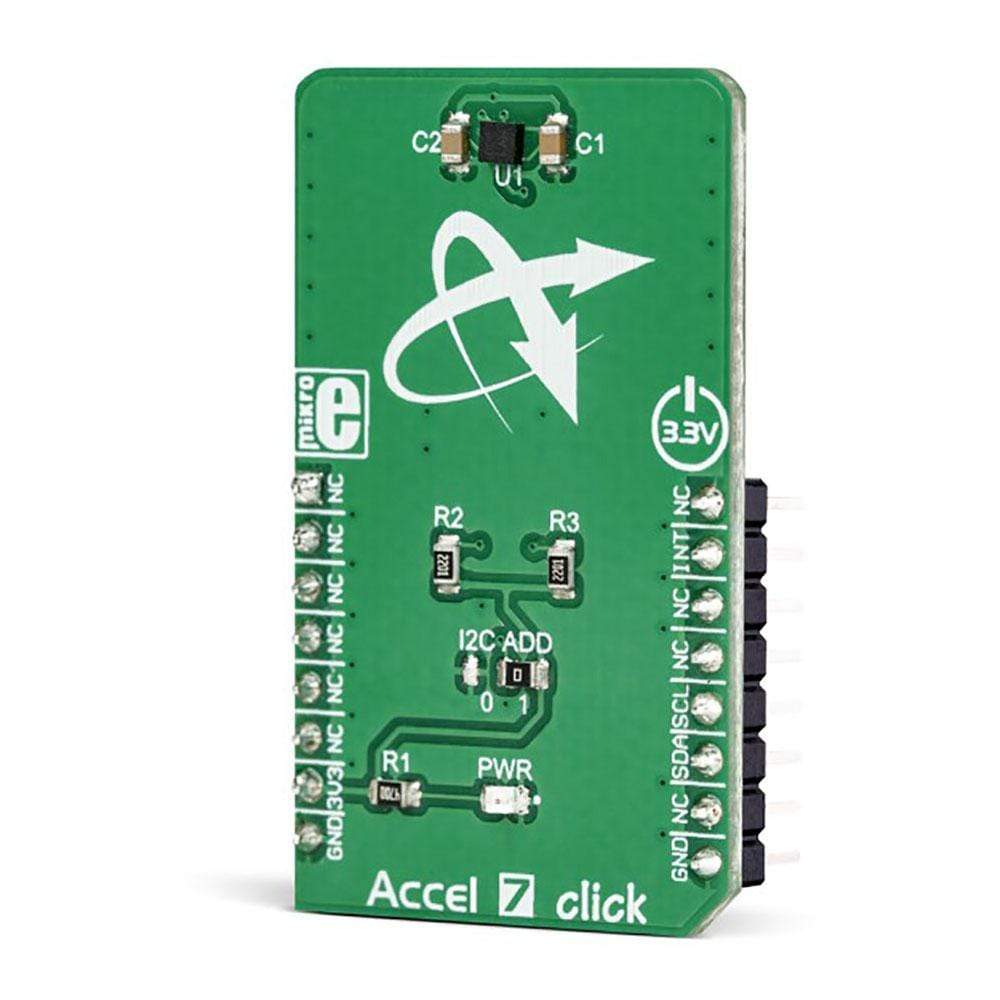
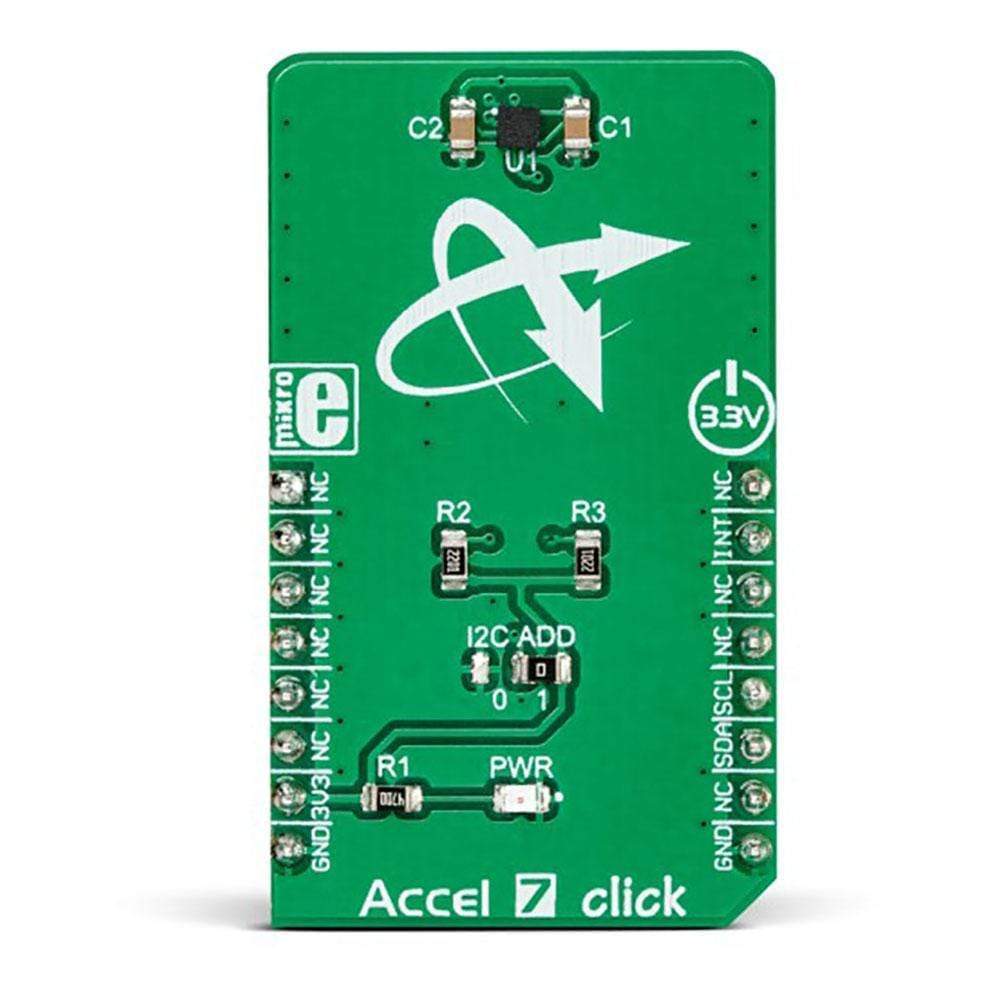
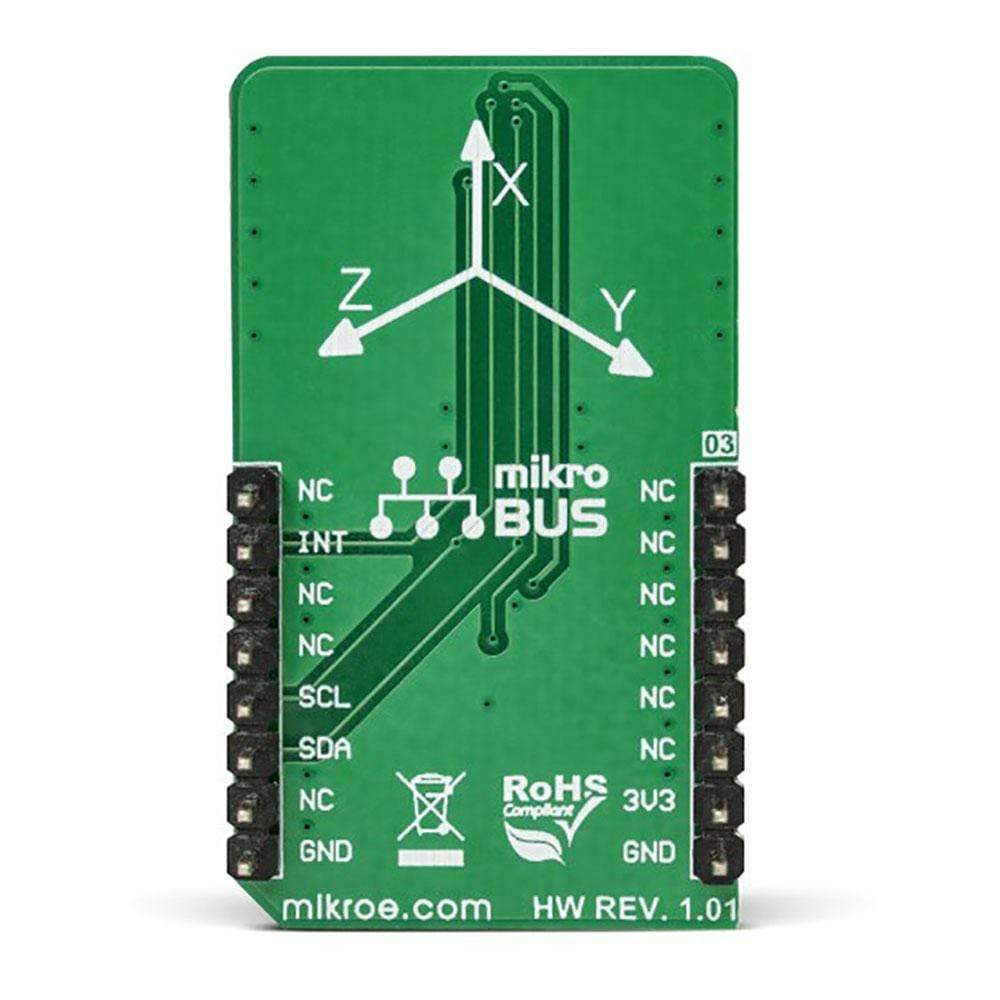
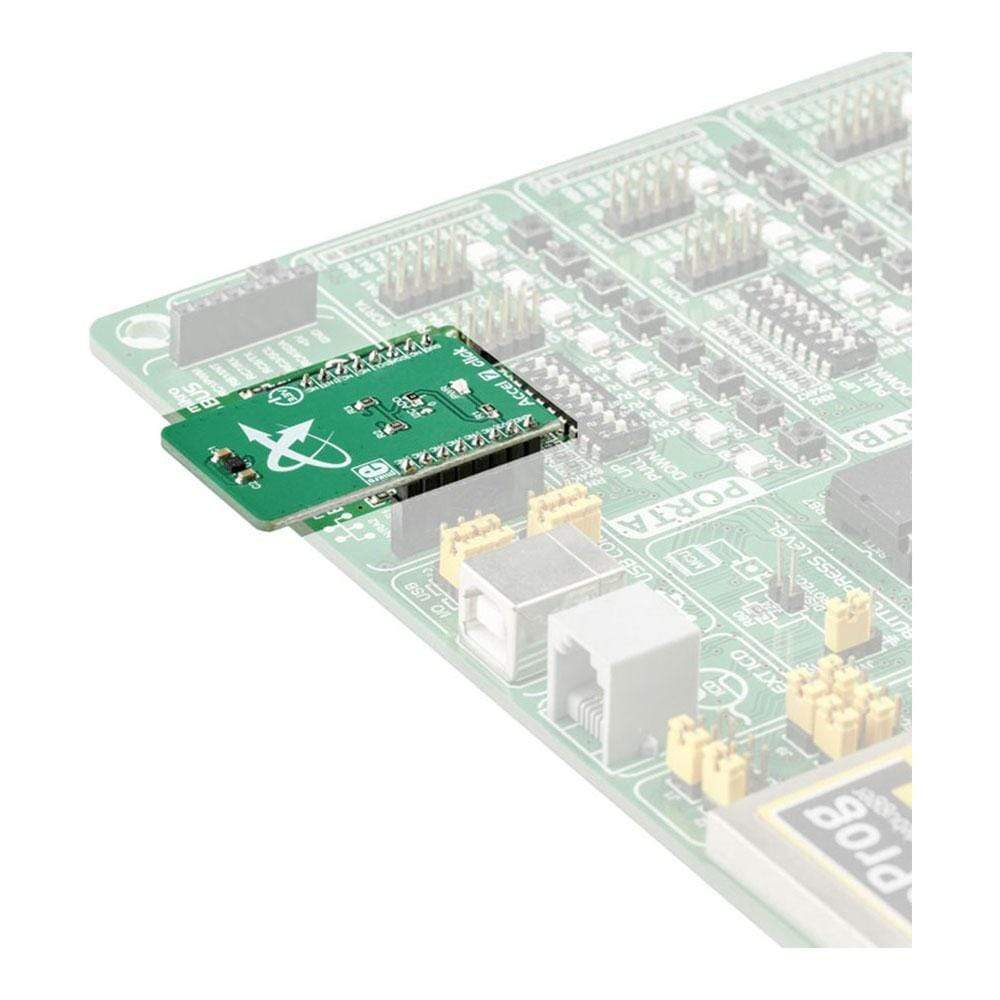
Overview
The Accel 7 Click Board™ is a tri-axis acceleration sensing Click Board™ powered by the KXTJ3-1057 14-bit tri-axis digital accelerometer from Kionix. This sensor was developed using proprietary Kionix micro-machining technology, resulting in high accuracy and excellent noise immunity. The Accel 7 Click Board™ supports a wide range of applications that require low power consumption, fast response, precision, and reliability. As such it can be used for motion detection, display orientation, HID applications, drop detection applications (for warranty logging), and similar applications that rely on acceleration and motion-sensing.
It comes in a package that also includes the mikroSDK software and a library with all the functions. The Accel 7 Click Board™ comes as a fully tested and approved prototype, making it a reliable device ready to use on the development board.
Downloads
L' Accel 7 Click Board™ est un capteur d'accélération tri-axe Click Board™ alimenté par l'accéléromètre numérique tri-axe 14 bits KXTJ3-1057 de Kionix. Ce capteur a été développé à l'aide de la technologie de micro-usinage exclusive de Kionix, ce qui se traduit par une grande précision et une excellente immunité au bruit. L' Accel 7 Click Board™ prend en charge une large gamme d'applications qui nécessitent une faible consommation d'énergie, une réponse rapide, de la précision et de la fiabilité. En tant que tel, il peut être utilisé pour la détection de mouvement, l'orientation de l'affichage, les applications HID, les applications de détection de chute (pour l'enregistrement de la garantie) et des applications similaires qui reposent sur l'accélération et la détection de mouvement.
Il est livré dans un package qui comprend également le logiciel mikroSDK et une bibliothèque avec toutes les fonctions. L' Accel 7 Click Board™ est livré sous la forme d'un prototype entièrement testé et approuvé, ce qui en fait un appareil fiable prêt à être utilisé sur la carte de développement.
| General Information | |
|---|---|
Part Number (SKU) |
MIKROE-3244
|
Manufacturer |
|
| Physical and Mechanical | |
Weight |
0.019 kg
|
| Other | |
Country of Origin |
|
HS Code Customs Tariff code
|
|
EAN |
8606018713899
|
Warranty |
|
Frequently Asked Questions
Have a Question?
Be the first to ask a question about this.

